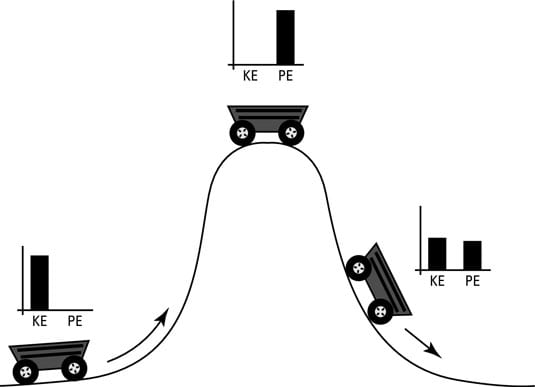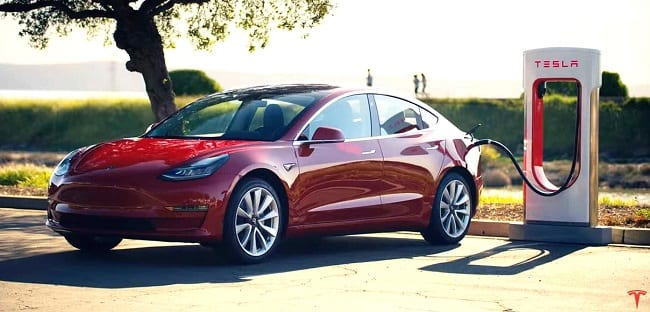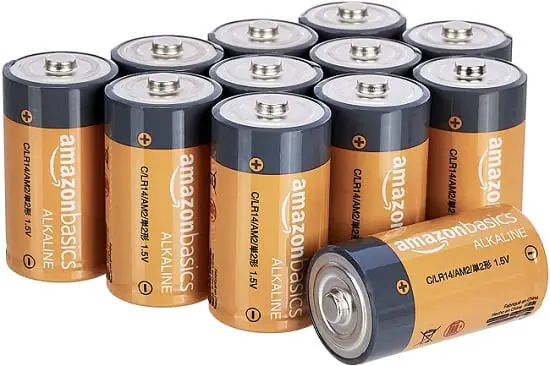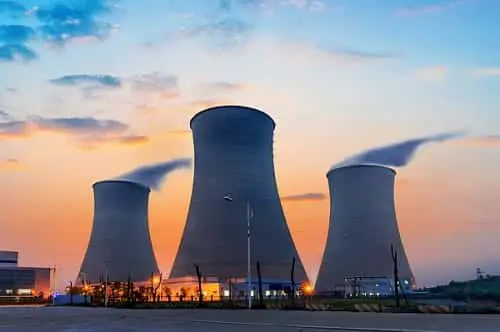Wanna know what are the top 6 types of energy and their examples? If yes, then you are at the right place at the very right time. Fundamentally speaking, there are mainly two types of energy i.e. Kinetic energy and potential energy.
Kinetic energy implies the energy of a moving object. Potential energy implies energy stored in an object due to its position. On the contrary, depending on factors like how energy is being transferred or their generating sources, these two primary kinds of energy can be further bifurcated into many different types of energy.
In this article, apart from all types of energy, I have handpicked the best top 6 forms of energy and of course with their respective examples too. So, just buckle up for this energetic ride. And, if you like this article, don’t forget to share it with your family and friends. Let’s Dive In.
6 Different Types of Energy and Their Examples
- Nuclear Energy
- Sound Energy
- Mechanical Energy
- Thermal Energy
- Electrical Energy
- Chemical Energy
Nuclear Energy
Nuclear Energy is energy being generated during the nuclear fusion or nuclear fission process within nucleons (combinations of both protons and neutrons) of an atom.
In other words, the energy that comes from the nucleus of an atom is Nuclear Energy. This energy is generally trapped inside the nucleon of an atom.
It can be produced either by nuclear fusion reaction i.e. combining atoms or by nuclear fission reaction i.e. splitting of atoms.
Sometimes, nuclear energy is also called Nuclear Binding Energy. Simply because this energy holds together the components of the nucleus i.e. Protons and Neutrons. The SI unit of Nuclear Energy is Joule (J).
Examples of Nuclear Energy

The best example of the use of Nuclear Energy was the American bombing of Hiroshima and Nagasaki of Imperial Japan during World War 2.
But, as time goes ahead, with the help of technological advancement in the field of nuclear science; today we have a large number of examples or applications of nuclear energy.
Not to mention, you are aware of the current utilization of electricity in our day-to-day life. I mean, without electricity, we humans are nothing.
Currently, nuclear energy is generating approximately 10 to 12 percent of the global consumption of electricity supply.
As a matter of fact, the greatest advantage of nuclear energy in the field of electricity production is that it is by far the largest low-carbon source of electricity (after hydropower plants).
Surely, the use of nuclear energy in everyday life is expanding exponentially. The other nuclear energy uses are in medical equipment, agricultural and food treatment, space exploration, and military vehicles such as Nuclear Powered Submarines, etc.
Sound Energy
Sonic Energy or Sound Energy is a form of energy that arises due to the vibrations of matter. It requires a medium to travel, which is why sound energy or sound waves are a typical example of mechanical waves.
The traveling medium can be air, water, wood, etc. Typically, the energy of sound waves is less than any other form of energy. Generally, sound energy is measured in Decibel or Pascal.
Examples of Sonic Energy

By far, the best possible use of sound energy or a sound wave is in the development of SONAR. SONAR stands for Sound Navigation Ranging. In fact, with the development of SONAR devices, it became easy to detect enemy ships, submarines, or even underwater obstacles.
On the contrary, sometimes I wonder if the sonar device was developed at the time of the Titanic sinking. Then, the Titanic would have easily detected the iceberg (obstacle). Hence, could have changed its course of the path, rather than striking the iceberg and sinking in the North Atlantic Ocean.
Apart from the SONAR device, sound energy is used in many industries such as medical industries, science, and technology industries, and in music industries. Moreover, there are so many examples of sound energy from our day-to-day life such as the barking of a dog, the running of a motor car, or when you talk with your friend.
Mechanical Energy
The next one on my list of the top 6 different types of energy and their examples is Mechanical Energy. Not to mention, if you want to know everything about energy, you need to have proper knowledge about the definition of Mechanical Energy.
Mechanical energy is the energy of an object due to its movement or position, or sometimes both. It is the most common form of energy that we see in our day-to-day lives. In other words, all moving objects produce mechanical energy. By definition, mechanical energy is the sum of kinetic energy and potential energy. The SI unit of mechanical energy is Joule (J).
Examples of Mechanical Energy

As I said earlier, it is a combination of both kinetic energy as well as potential energy, or in some cases, only one exists. Let’s see how!
For example, a book kept on the table is an example of potential energy. On the other hand, a moving car is an example of kinetic energy.
Moreover, a moving car going up in the mountains has both kinetic energy as well as potential energy. See the above figure for a proper understanding.
Editor’s Choice: Top 6 Sources of Mechanical Energy You Should Know
Thermal Energy
Thermal energy or Heat Energy is the energy of a Thermodynamic System that results from the movement of tiny particles or molecules to or from the thermodynamic system. That’s why heat energy can be transferred from one object to another.
The higher the movement or vibration of tiny particles or molecules, the higher will be the gain in temperature. Therefore, as a result, the higher will be the heat transfer from one object to another, the higher will be the generation of heat energy.
Heat energy is also called thermal energy because of its linkage to the change in temperature. The SI unit of heat is Joule (J).
Examples of Thermal (Heat) Energy

Although, there is a wide range of applications of Thermal or Heat Energy. Yet, in my view; solar energy used for cooking or for doing any kind of household work is the best possible example of thermal energy.
In other words, Solar energy produced by the sun is the best source of heat energy. In fact, it is by far the best source of heat on Earth. Apart from solar energy, other examples of thermal energy are the burning of fossil fuels such as petrol, diesel gasoline, etc as automobile fuels.
If I talk in terms of natural resources of thermal energy, Hot Springs and geysers are the natural sources of Thermal Energy. These natural resources originate from the interior of our planet Earth. That’s why they are also known as Geothermal Sources Of Energy.
Electrical Energy
Electrical Energy is a form of energy produced by the electrons moving through a material (conductor). Generally, in any material, there is no electrical energy.
Unless or until we force the electrons to move in a certain direction. Then, and, only then, electricity can be generated and be able to flow through an electric conductor.
Examples of Electrical Energy

Electrical Energy or Electricity is one of the most common and useful forms of energy. Not to mention, you exactly know the obvious reason behind it.
The most common application of electricity is that it lights our homes, and powers our home appliances. Nowadays everyone is quite aware of Electric-Powered Cars.
In fact, it is one of the best examples of the utilization of electrical energy. On the other hand, if I talk about Natural Electrical Energy examples; then, Thunder Lightning is the best example of a natural source of electrical energy.
Chemical Energy
Chemical Energy is a form of energy stored in chemical substances. During a chemical reaction, this energy is released or absorbed when the chemical bonds are made or broken. All the information about chemical energy is stored in chemical substances.
Chemical Energy can be easily converted into other types of energy by chemical reactions. In fact, they are often released in the form of heat (thermal energy) or light.
Generally, there are two types of chemical reactions. These are Endothermic Chemical Reactions and Exothermic Chemical Reactions.
Editor’s Choice: Endothermic vs Exothermic – What’s the Difference?
Examples of Chemical Energy

Well, the simplest example of chemical energy is the use of Batteries. I mean, nowadays they are everywhere. With batteries, we convert chemical energy into electrical energy.
On the other hand, we can make use of chemical energy in terms of fossil fuels, such as the burning of gasoline, or burning of coal, etc.
Biomass, wood, petrol, coal, natural gas, etc are also good examples of stored chemical energy. In other words, you can say that chemical energy is one of the best examples of stored energy.
Some other types of Energy
Apart from the above-mentioned ones, I am also mentioning a few here:
- Radiant Energy
- Motion Energy
- Elastic Energy
- Gravitational Energy
- Rest Energy
- Magnetic Energy, etc
That’s it for this post. If you like this article, share it if you like, like it if you share it. You can also find us on Mix, Twitter, Pinterest, and Facebook. Hey man, If you have come this far, do give us feedback in the comment section. It would make my day. You can also make a donation. Your donations will help us to run our website and serve you BETTER. Cheers!!!
You might also like:
- Renewable Energy: Definition, Examples, Advantages, Disadvantages & its Future
- Nonrenewable Energy: Definition, Examples, Advantages, Disadvantages
- Difference Between Renewable and Nonrenewable Energy Resources (Tabular Form)
- Examples of Renewable Resources – Top 6

That is a Tesla Model 3 not an S
Great job
Keep on doing de good job